South Asia presents a vivid tapestry of human diversity in all its glory. Across its eight countries, adherents of all the world’s religions live side-by-side, speaking hundreds of languages and dialects, sharing deep cultural similarities, and celebrating their differences. South Asia as a region has witnessed significant developments in the year 2020 in all spheres, i.e., economically, politically and at the international level. As a region, comprising eight countries, the economic growth was predicted to see a slowdown of 1.8% to 2.8% this year, the World Bank said in its South Asia Economic Focus Report, well down from the 6.3% it projected six months ago. Other than India, the World Bank forecast that Sri Lanka, Nepal, Bhutan, and Bangladesh will also see a slowdown. Also, South Asia gets 22 percent of global remittances, which amounted to USD 122.4 billion last year. The World Bank expects remittances to South Asia will drop 22 percent in the year 2020, underscoring the economic distress stemming from the Covid-19 pandemic and the ensuing lockdown aimed at curbing the disease. The governments of South Asia due to the pandemic and other internal issues face challenges that need to be addressed in 2021. However, the pandemic also bought all the South Asian countries together in the form of the SAARC COVID-19 Emergency Fund, which has accumulated a sum of USD 21.8 million with a pool of contributions from seven member countries. At the individual country level, the economic, political, and international developments are traced in the article below, and the way forward for the year 2021 (except for Afghanistan, Pakistan, and Myanmar which are covered in separate articles).
Bangladesh
COVID-19 has been the main focus for Bangladesh for the year 2020. Given the rise in cases on 22 March, Bangladesh announced a total nationwide lockdown for 10 days which went into effect from 26 March to 4 April. The lockdown was later extended till 30May. Bangladesh was slow to adapt to the COVID-19 outbreak; at the very beginning of the outbreak, not enough tests were conducted in the country, which has a population of more than 160 million. For a long time, testing was only conducted at the Institute of Epidemiology, Disease Control and Research (IEDCR) in the capital Dhaka, although patients with symptoms were reported all around the country. This led to a nationwide outcry for better support from the government in dealing with this crisis.
Economically, this year in October when the International Monetary Fund (IMF) released their biannual World Economic Outlook, it made a big splash in both India and Bangladesh because the report showed that India’s projected per capita GDP will fall below that of Bangladesh in 2020. The numbers show that the Covid-19 crisis has hit the Indian economy much harder than Bangladesh in terms of growth. The GDP per capita for India in 2020 was USD1876.53 where for Bangladesh it was USD1887.97. In 2019, the GDP per capita for India was USD 2097.78 comparing that to Bangladesh’s GDP per capita, which was USD1816.04, it can be seen that economically COVID-19 hit India much harder than it did Bangladesh. Even though there is an increase in GDP per capita but that is not being felt by the people of Bangladesh as the unemployment rate in the country has remained similar to last year. In 2019 the unemployment was about 4.19 whereas in 2020 it is at 4.15. There has been almost no change in the rate of unemployment in the country.
Politically, 2020 was a year of stability. Prime Minister Sheikh Hasina’s government by enjoying a complete majority in the parliament hardly faced any challenges to its stability. The year could be considered a positive year for the country’s politics as Begum Khaleda Zia, the leader of the Bangladesh Nationalist Party (BNP) and a former Prime Minister, who was serving a five-year prison term for corruption, was released from jail in March, after two years. Another important development in the political arena has been the launch of a political party by the reformist faction of the Jamaat-e-Islami (JI), the influential religion-based political party. The new party named Amar Bangladesh party claimed to be different from the JI’s ideology and pursues independence of Bangladesh in 1971 as its basis. Notably, the JI is notorious for its opposition to the independence of the country. The launch and activities of the new party are being followed with caution.
For Prime Minister Hasina’s government, it was a momentous year as the prestigious Padma bridge project attained a major milestone with the completion of the structural work. The bridge has been a major infrastructure project for Prime Minister Hasina as it was funded locally. The project had hit controversy after the World Bank withdrew from funding it. Then, many analysts had expressed scepticism over Hasina’s decision to fund the project indigenously. The completion of the structural work has thus significantly boosted the pride of the nation.
In November 2020, seven Bangladeshi naval boats carrying more than 1,640 Rohingya Muslims landed on the low-slung island of Bhasan Char, as part of the Bangladeshi government’s plan to ease crowding in refugee camps where more than a million Rohingya have lived since fleeing systemic persecution and violence in Myanmar. Human rights groups have decried the resettlement, saying that the Rohingya, yet again, were being forced to move against their will. The Bangladeshi government has said that it plans to move 100,000 Rohingya to Bhasan Char, which means “floating island” in Bengali. The estuary landmass appears to have taken shape from silt in the 1980s and 1990s; dredging carried out by a Chinese company, among others, was intended to make it fit for habitation and to stop the high tide from flooding it.
Way Forward for the year 2021
- For the past 50 years or so, South Asia, for most of the rest of the world, has meant India and Pakistan. The economic rise of Bangladesh will change some of that.
- In the past, Pakistan’s economy was USD 60 billion larger than Bangladesh’s; however, now Bangladesh’s economy has taken over Pakistan’s by the same margin. A US dollar today is worth 85 Bangladeshi taka or 162 Pakistani rupees.
- The economic success of Bangladesh is drawing attention from a range of countries in East Asia, including China, Japan, South Korea, and Singapore. The US, which traditionally focused on India and Pakistan, has woken up to the possibilities in Bangladesh.
- The economic rise of Bangladesh could boost India’s national plans to accelerate the development of its eastern and north-eastern states. Better integration between Bangladesh and West Bengal would provide a huge boost for eastern India. So would connectivity between India’s landlocked Northeast and Bangladesh.
Bhutan
The year 2020 marked the completion of a visionary document “Bhutan 2020: A Vision for Peace, Prosperity, and Happiness”, released in June 1999. However, there are arguments that the country did not achieve much. Critics however have pointed out that the country's economic goals are not close to the targets. For example, around 62.2 percent of the population still resides in rural areas, more than a quarter of the farmlands remain fallow, whereas the Vision 2020 targeted increasing farmers' income and income from horticulture by 300 percent each respectively. However, there are numerous achievements, for instance, the farming cooperatives including youth cooperatives have been institutionalized to promote agriculture and create employment. The target for hydropower production has increased. Decentralization has taken root in local governments.
The first COVID-19 case was reported on 06 March, and after its first two cases, Bhutan immediately implemented lockdown on 22 March. For a country that relies heavily on imports, particularly food and fuel from India, as well as tourism, this amounted to cutting off its economic lifeline. The World Bank in its report, “South Asia Economic Focus, Spring 2020”, estimated that Bhutan’s real GDP growth in the fiscal year 2020 will decelerate in the range of 2.2 to 2.9 percent. Economic sectors, agriculture, construction, and export are adversely affected due to disruptions on the supply side such as labour shortages and lower external demand. The trend is likely to continue until the end of 2021. The country’s current account deficit is likely to persist given the country’s dependence on essential imports, both for consumption and investment. The fiscal deficit is expected to widen to 3.4 percent in the fiscal year 2020 due to a pickup in current spending in response to the COVID-19.
On 27 January, Labour Minister, Ugyen Dorji, stated that they created more than 5,300 jobs in the last one and a half years. However, by mid-year, due to the COVID-19 pandemic, about 11,235 people were out of jobs in the domestic market. The labour ministry also estimated that about 3,424 of those employed abroad have returned home. The labour ministry also reported that the restriction on labour import has led to a shortage of foreign workers in the country. The “Build Bhutan” project is being launched through which the government aims to mobilize, create, and manage a pool of skilled workforce to meet the requirement in the construction sector. The country also drew attention to the risks and additional burden women or girls and children faced during the COVID-19 pandemic.
The government is working on an Economic Stimulus Plan aimed at helping different sectors and announced a National Resilience Fund for mitigating COVID-19 linked job losses and salary cuts. The government also formulated plans to fast-track the implementation of the 12th Five Year Plan activities. An additional resource of Nu 2 billion was provided to the Ministry of Health to meet health-related spending. A Kidu programme was rolled to address the problem from the supply-side and demand-side using both fiscal policy and monetary policy, establishing a national resilience fund of Nu 30 billion, deferring the mortgage payment, and waiving off interest payment for three months. The Royal Government of Bhutan and the World Bank signed a $40 million budget support loan agreement to help Bhutan undertake a comprehensive reform programme to enhance its fiscal management and realise its development goals.
India has provided OTS support to the country by sending a consignment of medical supplies, including Hydroxychloroquine, under the Coronavirus Emergency Fund. India has also facilitated the maximum number of special Druk Air flights to ensure the return of Bhutanese students and nationals, ordinarily resident in India. Meanwhile, Thimphu has committed USD 100,000 to the SAARC emergency fund proposed by Prime Minister Narendra Modi to help combat the coronavirus threat in the region.
Way Forward for 2021
- There is a need to strongly reinforce its three Ts – Testing, Tracing, and Treatment strategy with additional measures to address the rising COVID-19 cases.
- Concern over the rising unemployment post-COVID-19 must be addressed.
- Bhutan is an import-driven country; and therefore, efforts must be taken to open up the economy with a cautious approach.
- The debate over GST continued in the year 2020, and the year 2021 is expected to see the implementation of GST in phases.
Nepal
Since the beginning of the year, COVID-19 has been in the news, and the Government of Nepal announced a complete nationwide lockdown on 24 March 2020, after two positive cases were reported in the country. After four months of lockdown, the country reopened on 21 July, with restrictions. But since then, there has been a surge, with cases and fatalities more than doubling in August. With the increase in COVID-19 cases, Nepal’s fractured healthcare system is exposed. The government’s response has been inadequate and insufficient, and also has led to protests in various parts of the country. Two peaceful protests were organised in June 2020 in Kathmandu and other major cities like Pokhara, Biratnagar, Chitwan, Hetauda, and Birgunj.
Economically, World Bank June 2020 report predicted Nepal’s GDP growth to be at 1.8 percent in FY 2020, compared to seven percent in FY 2019. A recent Nepal Rastra Bank survey mentioned an increase in unemployment and massive disruption in the production and supply chain as 61 percent of businesses shut their operations completely because of COVID-19. Coronavirus pandemic has impacted the tourism industry, animportant contributor to Nepal’s GDP. The Visit Nepal 2020 campaign had to be called off. COVID-19 also reduced the number of Nepali citizens going abroad for work, thereby curtailing remittance inflows. The Nepal Rastra Bank projected a drop of over 15 percent in remittances in the current fiscal year. The Oli Government’s rampant borrowing has put the debt-to-GDP ratio under pressure. The year 2020 also saw a debate on the need for the implementation of a single integrated financial management information system.
Politically, Nepal has witnessed internal turmoil since the beginning of the year. This turmoil has been in continuation of the previous year's issues that the ruling party was failing to address. In the beginning, the internal failure to reach a consensus on the new speaker led to concerns in the parliament. The two chairs of the ruling Nepal Communist Party, KP Sharma Oli, and Pushpa Kamal Dahal, in July, decided to sit for talks but failed to reach a consensus. Dahal maintained that Oli must resign both as party chair and Prime Minister, while the latter refused. In mid-October, Oli removed Ishwar Pokhrel as the Defence Minister and took the defence portfolio with himself. In November, both the chairs stopped talks again. Amidst all the internal issues, on 20 December 2020, PM Oli dissolved the House of Representatives, and President, Bidya Devi Bhandari, approved the Cabinet’s recommendation for the dissolution.
As Nepal marks five years of the federal constitution, Nepal is yet to internalise federalism in the true sense and the politicians in Kathmandu are accused of continuing to work with the centralised mindset. Lack of federal laws is equally affecting the local governments in exercising their authority. For example, adequate numbers of employees from the federal government have not been deputed at provincial and local levels. Even though, the constitution provisions for provincial governments to hire the staff they need and five of the seven have constituted a public service commission to recruit employees through competitive tests; the federal parliament is yet to endorse the Federal Civil Service Bill, and therefore, the positions remain vacant. The year also witnessed a renewed debate on the choice of governing systems, Monarchy or Federalism. The pro-royalist and pro-Hindu forces marched on Kathmandu’s streets and demanded the return of the monarchy. Although the monarchical system may not return to governing the country, people’s nostalgia for it is nevertheless present in some measure.
At the international relations front, Nepal is walking a tightrope between India and China, and there is competition over trade, investments, and political interferences between Nepal’s two neighbours, China and India. China’s President Xi Jinping ordered a high-level four-member team of communist party officials to travel to Kathmandu to stop the Nepal Communist Party from splitting. However, India has adopted a hands-off approach to the developments in Nepal, saying it is an internal matter. Earlier, Chinese President Xi Jinping stopped over in Kathmandu, after his informal summit meeting in India. The visit concluded with a 14-point joint statement with a focus on elevating the Nepal-China relationship to a ‘strategic partnership’. However, irritants are present in China-Nepal relations as well, as the two countries engaged in a boundary row in Humla after the Chinese side allegedly built 11 buildings in a remote part of the district that Nepal claims as its territory.
India-Nepal relations witnessed one of their lowest phases in 2020 after a bitter border row, but the bilateral ties were brought on track with a series of high-level interactions when Nepal faced a deep political crisis in the latter part of the year. On 08 May, Defence Minister Rajnath Singh inaugurated an 80-km-long road connecting the Lipulekh pass with Dharchula in Uttarakhand, because of which Nepal protested that the road passed through its territory. Later, Nepal came out with a new map showing Lipulekh, Kalapani, and Limpiyadhura as its territories. After the release of maps, India reacted sharply, calling it a "unilateral act”.
However, in the latter part of the year series of high-level visits were undertaken. In November 2020, Indian Army Chief General MM Navarane and Indian Foreign Secretary, Harsh Vardhan Shringla visited separately Nepal to reset the bilateral ties. During the visit, the Indian Army Chief was conferred with the honorary rank of 'General of the Nepal Army' by Nepalese President Bidya Devi Bhandari. India also gifted medical equipment to the Nepali army. Earlier, in mid-October, India’s Research and Analysis Wing (R&AW) Chief, Samant Kumar Goel, visited Kathmandu and met with Prime Minister KP Sharma Oli for setting the tone for upcoming talks.
Way Forward for the Year 2021
- The Nepal government has announced an ambitious plan to create nearly 700,000 jobs, mostly targeting returnee migrant workers. Nevertheless, the country needs more job opportunities, and needs to provide skills and training for the workforce as the labour force, which migrates abroad for employment, remains unskilled.
- Need to promote domestic products for sustainable trade. During the year, India imposed restrictions on imports of refined palm oil, as the imports from third countries were being re-exported to India to take advantage of its low customs duty. Lentils, chickpeas, betel nuts, and many other products have faced a similar fate in the past.
- The year 2021 would further mark huge political shifts in Nepal as the country is scheduled to go for elections. Communist Parties are trying to forge alliances to ensure their win; a party split might result in the polity’s loss of faith in its leaders and the country’s potential reversion towards political instability. The opposition appears to be absent, lacking a concrete plan to oppose the current ruling party. Nepal must ensure its domestic problems are solved internally, without the influence of external actors.
- China’s interference in Nepal’s political sphere is a cause of concern. China sent a four-member team to avoid a split in the ruling party that has led to worries in Nepal. There is also a need to ensure a detailed boundary inspection because of the rising issues of boundary disputes between Nepal and China.
- Nepal is important for India in the context of its overall strategic interests, and their relationship which is claimed as a "Roti-Beti" relationship. The good relationship between the armies of India and Nepal is being leveraged to overcome the ongoing bilateral deadlock. Also, the review of India-Nepal Friendship Treaty 1950 – both India and Nepal need to take a pragmatic course for realising their economic, security and other interests.
- These talks are a sign that shows that both Sri Lanka and the Maldives are trying to move away from China and towards India.
- The Maldives has made quite a few strides in opening back the country, but it is a tourism-driven economy and to get back to pre-COVID-19 level tourism the country needs to do more in order to make the tourists feel safe.
- The trilateral talks are a demonstration of the Indian intent to enhance the geographical reach of the Indian Navy.
- The talk will show the combined capability mix that is available to deal with China’s aggressive manoeuvres in the Indian Ocean region.
Maldives
Globally, 2020 was a year of challenge and hardship due to the outbreak of the Covid-19 pandemic that disturbed every aspect of the life of humanity, and the Maldives was no exception. Even though the Maldives did not institute a nationwide lockdown, most of the major islands including the capital Male were placed under a lockdown from 17April for 14 days. Due to the pandemic, the country suffered economically more than it did health care wise. Almost 70 percent of the country relies on tourism, the cancellation of all 26 weekly direct flights from China has had the biggest single impact. Visitors from China had become the largest tourist group up to September 2019. The cancellation of flights from India and Italy, the other two top tourist markets of 2019, has also affected the economy profoundly. Although the country’s borders were reopened on 1 July, the number of arrivals has been extremely low. To encourage more visitors, the Maldives highlighted health benefits such as the isolation provided by the ‘one island, one resort’ concept. Visitors are screened for the virus on arrival and are not required to spend time in quarantine.
Economically, in September 2020, it came to light that China’s Exim Bank was asking the Maldivian government to pay an instalment of USD 10 million (MVR 154 million) to a loan of USD 127 million loan to former Yameen ally and parliamentarian, ‘Sun’ Ahmed Shyam against ‘sovereign guarantee.’ The timing couldn't be worse. The Wuhan virus had hit the economy. The tourism sector had come to standstill. Another thing that came to light around the same time was the amount of money Maldives owed to China as China took up infrastructure projects including the China-Maldives friendship bridge that connected one island to another (the first of its kind in the archipelago). It was estimated that Maldives owes around USD 1.1 to USD 1.4 billion, a huge sum for a country with a GDP of around USD 4.9 billion.
In November of 2020, Colombo hosted NSA level talks between India, Sri Lanka, and the Maldives on maritime security. The meeting saw the revival of the national security advisor (NSA)-level dialogue among the three countries, which began almost a decade ago in 2011. To encourage meaningful maritime cooperation in the Indian Ocean region, India, Sri Lanka, and the Maldives discussed several areas for possible collaboration such as maritime domain awareness (MDA), humanitarian assistance and disaster relief (HADR), joint military exercises, capacity building, maritime security threats, marine pollution, and maritime underwater heritage.
Way Forward for the Year 2021
Sri Lanka
In Sri Lanka, the first case of COVID-19 was reported late January 2020 which was a Chinese national and the first local case was identified in the second week of March. Since then, the government of Sri Lanka introduced various sequential measures to improve social distancing such as the closure of schools and education institutes, introducing work from home model to reduce the public gathering, introducing travel bans to international arrivals, and more drastically, imposed island-wide curfew expecting to minimize the burden of the disease to the Sri Lankan health system and the entire community. Sri Lanka went into a total lockdown from 21March to 11May for more than 2 months. Sri Lanka has been ranked 9th best country in the world for its successful immediate response to tackling the virus. The potential impact from COVD-19 is unlike any other the country has faced, and the economy is likely to face a contraction in 2020 due to many sectors being at a standstill.
Economically, the COVID-19 lockdown had severely impacted Sri Lanka’s economy with a fall in earnings from tourism, remittances, and outflow of foreign investment. The severest impact was recorded in the tourism sector, with a drop of touristic arrivals by over 70 percent year-on-year in March. The number of international tourist arrivals in Sri Lanka declined in 2020 March by 70.8 percent in comparison to a year ago as the tourism industry has been hit hard by the coronavirus outbreak. The earnings from tourism were provisionally estimated to have declined to USD 135 million in March 2020 in comparison to USD 461 million in March 2019. Sri Lanka’s economy has in general been impacted since last year when the country was jolted by the Easter Sunday attacks, which killed over 250 people including Indians, impacting tourism in the nation. This year with economic woes in sight, Sri Lanka opted to seek help from India through currency swap arrangements. Sri Lanka had already secured a USD 400 million swap from India through the SAARC arrangement.
Politically, Sri Lanka has had quite an eventful year. In August of 2020, Sri Lanka had its general elections. Sri Lanka’s ruling party Sri Lanka Podujana Peramuna (SLPP) secured a two-thirds majority. Coming less than a year after President Gotabaya Rajapaksa’s ascent to power, the huge victory heralds the brothers’ likely power consolidation, as they helm the country’s two most powerful offices. The SLPP, one of Sri Lanka’s newest parties founded by the Rajapaksas, won 145 seats in the 225-member legislature. With the assured support of at least five allies, the party easily reach the 150-seat mark needed for two-thirds support. Even before the poll, the Rajapaksas vowed to change the 19th Amendment to the Constitution, a 2015 legislation — introduced when the former government was in power — that sought to trim the President’s executive powers and strengthen independent institutions. And in September 2020, the Cabinet set up an experts’ committee to draft Sri Lanka’s new Constitution, even as the government gazetted the draft of the 20th Amendment that would reverse the preceding 19th Amendment. The government’s amendments to the Constitution will be carried out in two-steps, while the 20th Amendment would “correct anomalies” in the current Constitution, a completely new Constitution would replace it soon after.
In November of 2020, Colombo hosted NSA level talks between India, Sri Lanka, and the Maldives on maritime security. The meeting saw the revival of the national security advisor (NSA)-level dialogue among the three countries, which began almost a decade ago in 2011. That the meeting took place six years after the last edition in 2014 is significant. The NSA-level talks are also a demonstration of the Indian intent to push subregional diplomacy, which has been gaining traction in India’s foreign policy in the last few years. To encourage meaningful maritime cooperation in the Indian Ocean region, India, Sri Lanka, and the Maldives discussed several areas for possible collaboration such as maritime domain awareness (MDA), humanitarian assistance and disaster relief (HADR), joint military exercises, capacity building, maritime security threats, marine pollution, and maritime underwater heritage.
While broader maritime security, anti-piracy, and HADR are important components of the growing India-Sri Lanka-Maldives strategic narrative, the real worry for India is growing Chinese activism in the Indian Ocean region. China’s efforts at cultivating the Indian Ocean littoral states have been a concern for New Delhi. In response, New Delhi has pursued many paths to build rapport with these neighbours, including bilateral, trilateral, and multi-lateral conversations in the region. These talks are a sign that shows that both Sri Lanka and the Maldives are trying to move away from China and towards India; with Sri Lanka even saying that they have an India first policy.
Way Forward for 2021
(The paper is the author’s individual scholastic articulation. The author certifies that the article/paper is original in content, unpublished and it has not been submitted for publication/web upload elsewhere, and that the facts and figures quoted are duly referenced, as needed, and are believed to be correct). (The paper does not necessarily represent the organisational stance... More >>

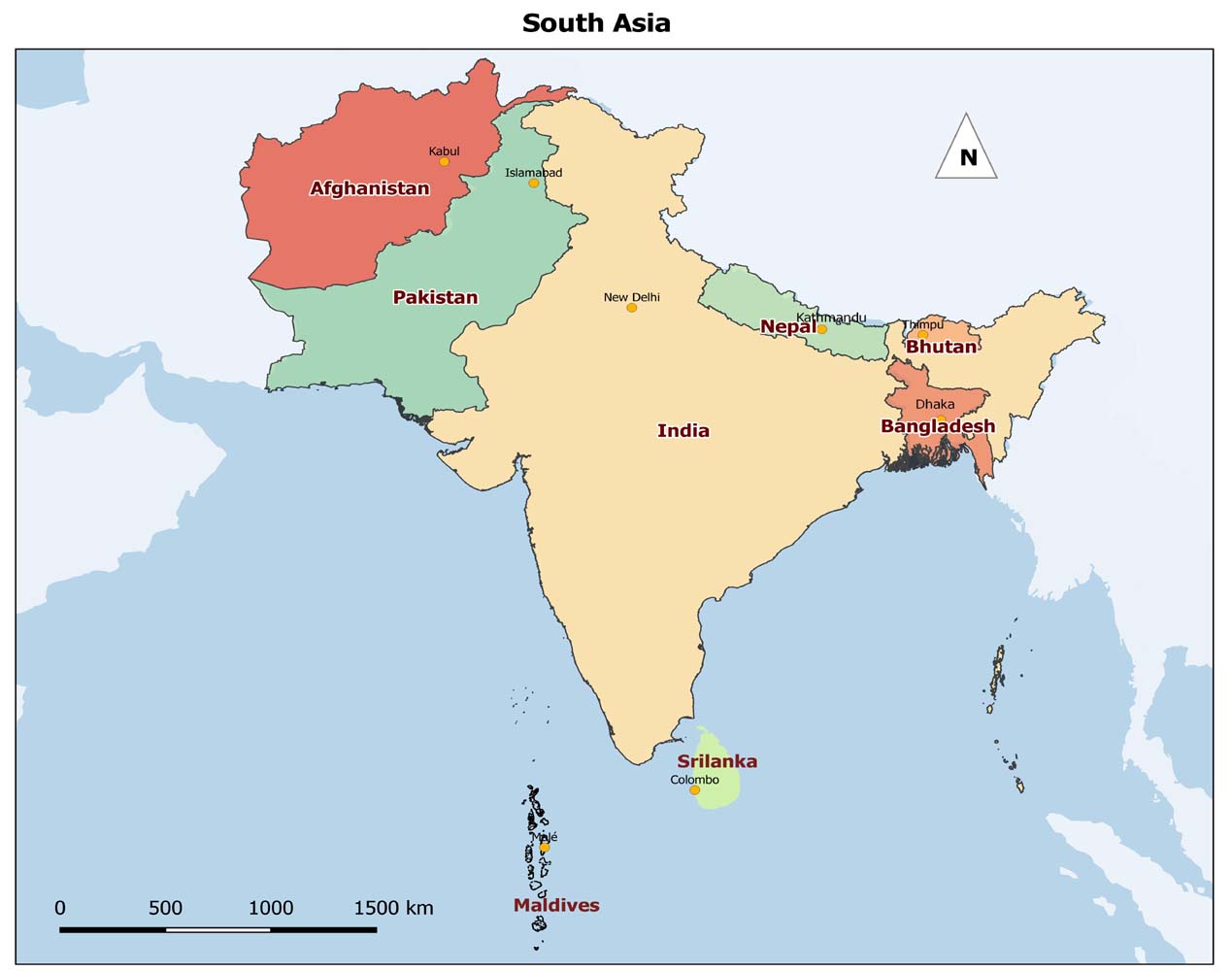




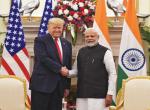
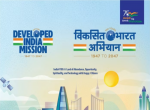
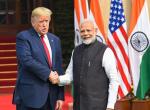
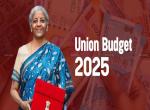
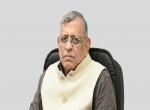
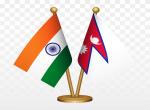
Post new comment